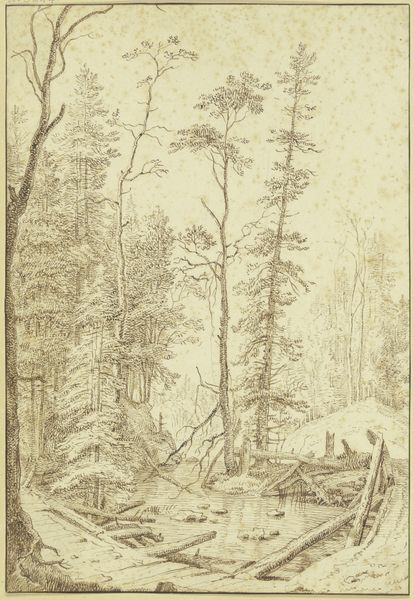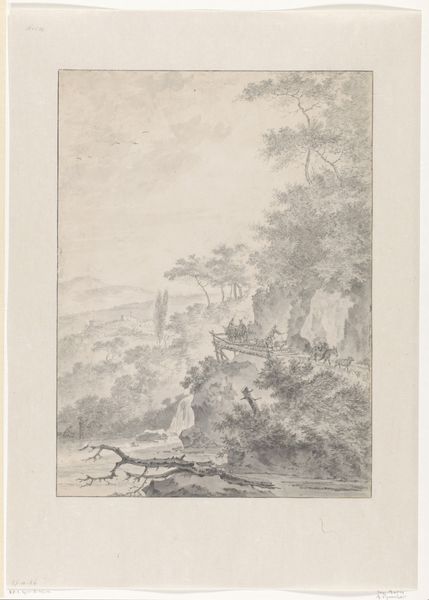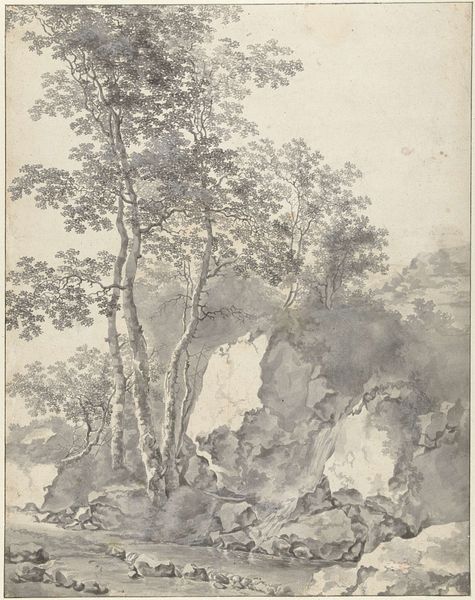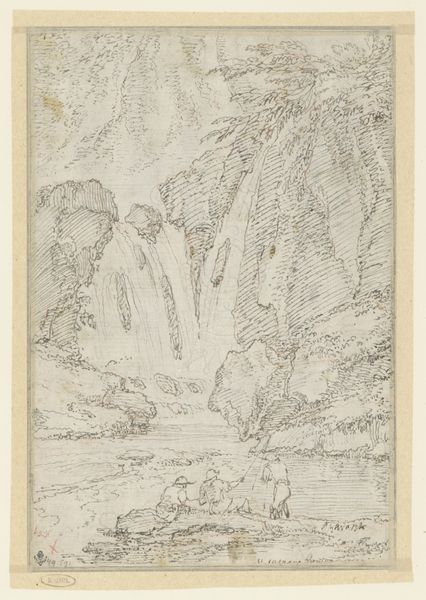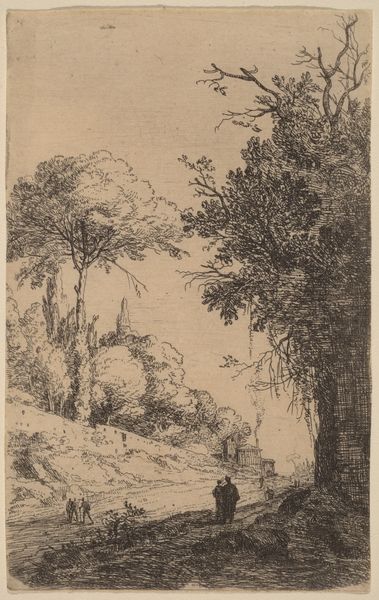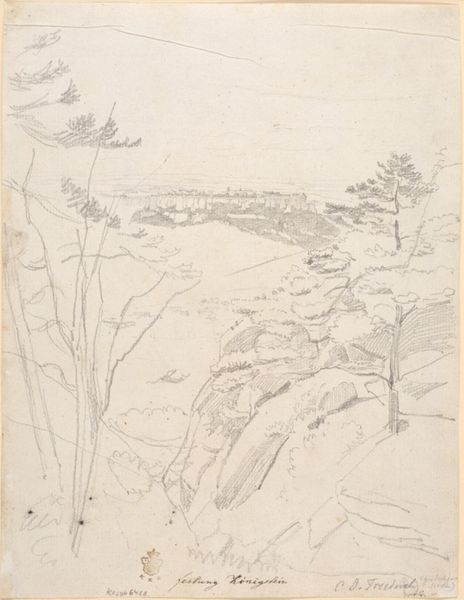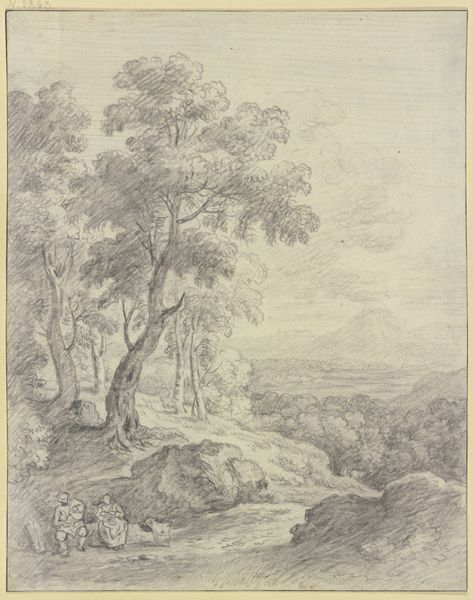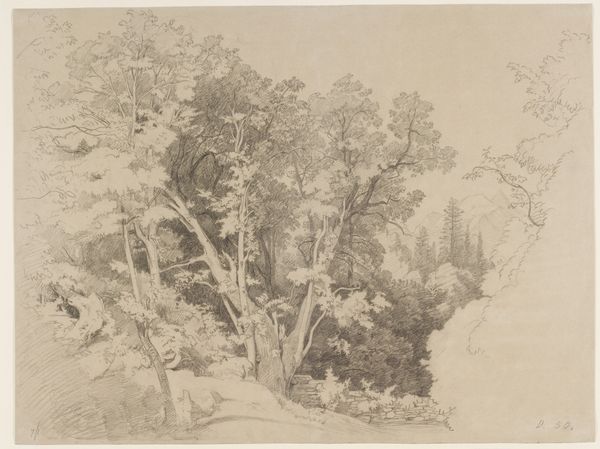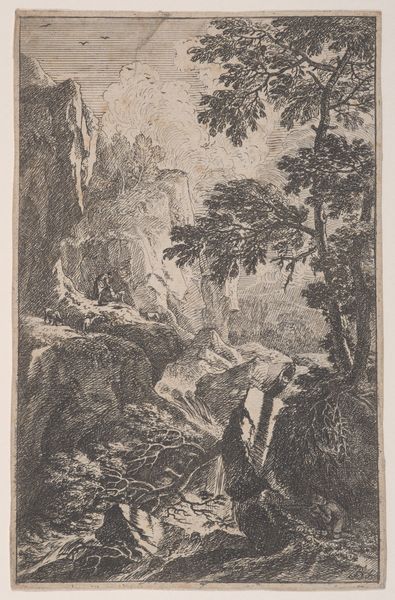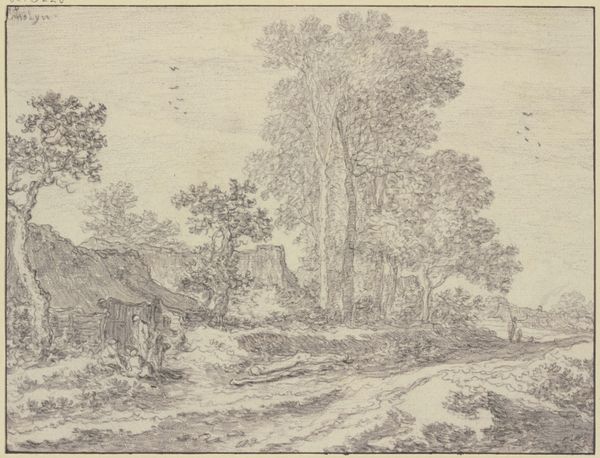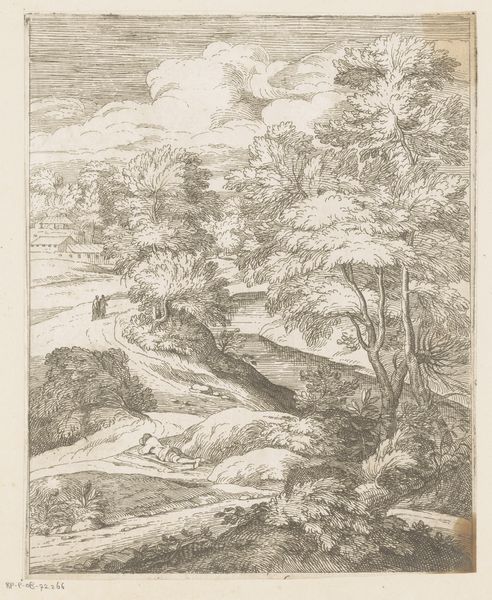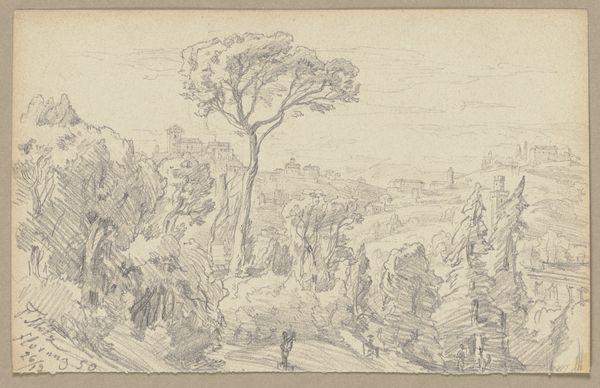
drawing, paper, pencil
#
drawing
#
baroque
#
pencil sketch
#
landscape
#
figuration
#
paper
#
pencil
#
sketchbook drawing
#
academic-art
Dimensions: height 217 mm, width 176 mm
Copyright: Rijks Museum: Open Domain
Editor: Here we have "Mountain Road with a Man and Two Mules," a pencil drawing on paper by Cornelis de Wael, dating somewhere between 1602 and 1667. It feels almost dreamlike to me, unfinished but also complete in its own way. How do you interpret this work, given its historical context? Curator: It’s interesting you call it dreamlike. As a historian, I see this less as a spontaneous creation and more as a product of specific artistic training and social expectations. The picturesque landscape, the inclusion of figures, all point to a cultural interest in the Grand Tour. Consider the market for these kinds of drawings; wealthy Europeans collected them as souvenirs. Does knowing that affect your perception? Editor: That’s fascinating. I hadn’t thought about it as a commodity. So, these drawings were like… postcards? But surely there’s something more than just documentation going on? Curator: Indeed! The “ideal landscape” was a powerful concept, shaping not just artistic creation, but also ideas about nature and national identity. Notice how the composition uses established conventions to guide the viewer's eye. It presents a romanticized, safe encounter with nature, which resonated with a particular social class. What are your thoughts on this landscape as "safe?" Editor: Safe how? It looks like a pretty treacherous climb for those mules! Maybe safe for the *viewer* because it’s just a drawing? I guess it is carefully composed to avoid being too rugged or threatening. Curator: Exactly! And understanding this reveals how art participated in shaping societal values and experiences of travel, leisure, and even class distinctions. What did you learn from seeing it from this lens? Editor: I learned to question the inherent value we assign to "nature" and to consider how power dynamics are always at play, even in a seemingly simple landscape drawing. Curator: Precisely, and I, how vital initial impression, even “naïve”, shapes further historical enquiry!
Comments
No comments
Be the first to comment and join the conversation on the ultimate creative platform.
